

It would be a mistake to attempt to define geographic limits for New York's five families. Family influence does not directly correlate with and is not confined to any region of the city or even to the entire city itself. The influence of New York families can be felt throughout the city, the Northeast region and all across the country. Though the coincidence of five New York-based Mafia organizations and five New York boroughs has tempted some to link crime families with boroughs, the number five is no more than coincidence. The processes that caused the numbers of city crime families to increase and decrease over time were canceled out when the total was frozen at five following the 1930-1931 Castellammarese War. The crime families do have traditional strongholds around the city (Bonanno and Profaci/Colombo families had traditional bases in Brooklyn; Gambino had bases in Queens, Brooklyn and the Bronx; Genovese had bases in Manhattan and the Bronx; Lucchese had its traditional base in the Bronx).
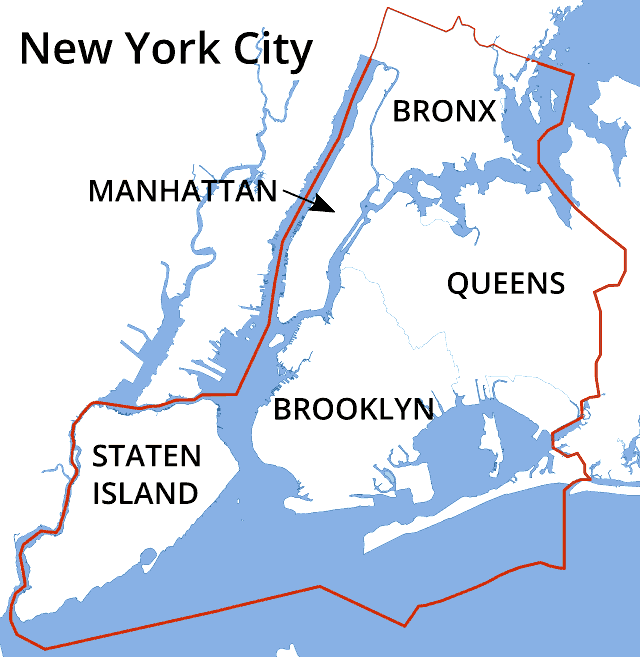
In addition to the traditional "five families," we include the Morello Crime Family. That organization, which dominated East Harlem Sicilians and maintained a presence in lower Manhattan's Elizabeth Street "Little Sicily" long before the Prohibition Era, may be viewed as a forerunner of the Genovese and Lucchese organizations and as a contributor to the Gambino organization. The Morello group is often viewed as the direct ancestor of the Genovese Crime Family, but the Genovese group appears to have evolved independently in lower Manhattan before remnants of the Morello faction merged into it.
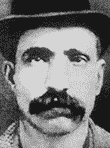
Morello
1895 - Giuseppe Morello (Born Corleone, Sicily, May 2, 1867. Killed New York City, Aug. 15, 1930). Known as "Piddu" (in erroneous reports as "Peter") or "Clutch Hand," Morello led a gang of extortionists and counterfeiters in Italian East Harlem and in the Little Sicily in Manhattan's Lower East Side. With the support of Sicilian/American Mafiosi like Vito Cascioferro, Pasquale Enea and Ignazio Lupo (who became Morello's brother-in-law) and with strong connections to Mafia organizations in New Orleans and Chicago, Morello was able to assemble a sprawling crime fraternity in the New York region and win recognition as Boss of Bosses of the whole U.S. Mafia, perhaps the first man to hold that title.
It appears that Morello's New York organization was a conglomeration of smaller Mafia units that allied or merged under his leadership. The organization fragmented upon the 1910 imprisonment of Morello and Lupo following a counterfeiting conviction. Morello lieutenant Salvatore D'Aquila took control of Palermo Mafiosi in the Bronx and Brooklyn. The LoMonte brothers commanded the remnants of the Morello organization in East Harlem. Gaetano Reina, a fellow Corleone countryman to Morello, established his own organization in the Bronx. These bosses and others competed to dominate rackets in Manhattan's Sicilian communities.
"Sinistro: The underworld career of Giuseppe Morello"
Gangster Era Reborn: Giuseppe Morello murder - crime scene photos
1912 - Fortunato LoMonte (Born July 15, 1869. Killed East Harlem, NY, May 24, 1914.). Fortunato "Charles" LoMonte and his brother Donato "Thomas" LoMonte, said to be related to the Morello-Terranova family, ran a lucrative feed business near the infamous Murder Stable in East Harlem and cooperated in rackets with Giosue Gallucci, local political and organized crime leader. Under Fortunato's leadership, the East Harlem mafiosi resisted the influence of new boss of bosses Salvatore "Toto" D'Aquila, installed after Giuseppe Morello was imprisoned.
1914 - Thomas LoMonte (Born c1886. Killed East Harlem, NY, Oct. 13, 1915). On May 23, 1914, Fortunato LoMonte was shot several times - twice in the chest and once in the abdomen - on East 108th Street. His assassin was identified decades later as Salvatore D'Aquila's top gunman, Umberto Valente. LoMonte died of the wounds the following day at Harlem Hospital. His brother Thomas LoMonte and business partner Ippolito Greco became the most important figures among anti-D'Aquila mafiosi in the area. Greco was fatally shot in the back on October 8, 1915. Thomas LoMonte was shot to death five days later at 116th Street and First Avenue.
1915 - Vincent Terranova (Born Corleone, Sicily, May 15, 1886. Killed East Harlem, NY, May 8, 1922.). The elimination of the LoMonte brothers left Giuseppe Morello's half brothers - Vincent, Nicholas "Coco," and Ciro Terranova - as leaders of the lingering Morello faction in East Harlem. In addition to continuing resistance against boss of bosses Salvatore D'Aquila, the Terranovas engaged in turf battles with Neapolitan-American Camorra gangsters in Manhattan and Brooklyn. Nicholas Terranova was lured to Brooklyn on September 7, 1916, and killed by Camorra gunmen. Vincent Terranova was shot to death, apparently by D'Aquila-allied forces, on May 8, 1922.
The Morello organization had no single linear descendant among the "five families" that took form in New York during the Prohibition Era. Salvatore D'Aquila, said to have once served as a Morello lieutenant, became boss of a Brooklyn- and Bronx-based organization (perhaps earlier a Palermo-oriented faction of the Morello organization) that had been earlier led by Ignazio Lupo. That later became known as the Gambino Crime Family. D'Aquila won the boss of bosses post vacated by Morello's imprisonment. Gaetano Reina, who founded a Bronx-based organization later referred to as the Lucchese Crime Family, had important connections with Morello and may have broken off from the Morellos when the rest of that organization opposed D'Aquila. What became the Genovese Crime Family, initially brought to life in downtown Manhattan through Giuseppe Masseria's own opposition to D'Aquila, eventually welcomed Morello, his relatives and the parts of his Manhattan organization resistant to D'Aquila rule.

1900 - Paolo Orlando (Born Camporeale, Sicily, Feb. 21, 1864.) has been identified by Warner, Santino and van't Riet ("The Early New York Mafia: An Alternative Theory," Informer, May 2014) as an early boss of the organization that evolved into the Bonanno Crime Family. It may be that Orlando - with kinship ties to Camporeale and perhaps a former leadership role among organized criminals in the Sicilian colony at Tunis, North Africa - commanded one of the small tributary organizations that, through interaction and intermarriage, quickly blended into the forerunner of the Bonanno group. (Warner, Santino and van't Riet noted that a number of Sicilian mafiosi clustered around an earlier immigrant from Camporeale, Antonino Governale. Governale reached New York in 1889, possibly pushing back the founding moment of this crime family's forerunners. But, aside from his connections to known underworld figures, there is no evidence that Governale was a Mafia member himself.) Warner, Santino and van't Riet acknowledge that known Mafia leaders of different backgrounds, such as Salvatore "Giuseppe Palermo" Saracina (Born Castellammare del Golfo, Sicily, 1862) and Nicola Schiro (Born Roccamena, Sicily, Sept. 2, 1872) existed within the Orlando orbit at this time. Orlando was one of the New York-area mafiosi anonymously accused of ordering the 1909 murder in Sicily of visiting New York Police Lieutenant Joseph Petrosino.
1909 - Sebastiano DiGaetano (Born Castellammare del Golfo, Sicily, 1862) emerged as the most significant figure in the Paolo Orlando cluster of mafiosi and as one of several New York Mafia capos known to law enforcement. Following the 1910 counterfeiting arrests of boss of bosses Giuseppe Morello and Ignazio Lupo, DiGaetano became temporary holder of the boss of bosses role. His selection to the position while the reigning boss of bosses was absent suggests that DiGaetano on his own was not considered a threat to Morello interests and may have been possessed of considerable diplomatic skills. After Morello and Lupo were sentenced to lengthy terms in federal prison and lost their legal appeals, the U.S. Mafia in 1912 set about the task of finding a permanent boss of bosses replacement. The remnants of the Morello group objected and pulled away from other New York Mafia organizations. At that moment, with the Sicilian-American underworld in New York fracturing, it was said that DiGaetano "lost his nerve" and abandoned his leadership roles.
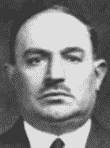
Schiro
1912 - Nicola Schiro (Born Roccamena, Sicily, Sept. 2, 1872. Died Camporeale, Sicily, April 29, 1957). Schiro, one of the Mafia leaders with connections to Antonino Governale, stepped to the leadership of the former DiGaetano organization. As friction increased between the Morello organization and new boss of bosses Salvatore D'Aquila, Schiro was able to keep his group out of the conflict. In the 1920s, as Giuseppe Morello was released from prison, war erupted in the Mafia of New York City. Schiro's clan was viewed as a safe neutral organization by mafioso Nicola Gentile, who later wrote of his life in the Mafia.
During Schiro's reign, the Brooklyn-based organization expanded with the addition of many members originally from Castellammare del Golfo, Sicily. The Castellammaresi constituted a distinct faction, primarily loyal to Castellammarese mafioso Stefano Magaddino, which eventually became dominant in the organization. Over time, Schiro degraded into a puppet ruler to Magaddino.
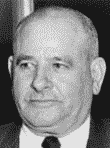
Magaddino
1915 - Stefano Magaddino (Born Castellammare del Golfo, Sicily, Oct. 10, 1891. Died July 19, 1974). Magaddino was a representative of the powerful Bonventre-Bonanno-Magaddino Mafia clan of Castellammare del Golfo. He arrived in the U.S. early in 1909. While he settled in Brooklyn, New York, he did a great deal of traveling and was soon inducted into the Mafia in Chicago, then dominated by Anthony D'Andrea. (Magaddino's reasons for selecting Chicago can only be guessed at. Perhaps he wished some separation from the underworld powder keg in New York City.)
Though not yet officially a boss, Magaddino was leader of a tightly knit but far-flung Castellammarese Mafia organization based in Williamsburg, Brooklyn. The organization had branches in Manhattan, Buffalo and Endicott, New York, as well as Detroit, Michigan, and Philadelphia, Pennsylvania. (Gaspare Milazzo/"Scibilia", later known as a Detroit Crime Family leader, also looks to have been part of the early Brooklyn Castellammarese family leadership.) Magaddino's group was reportedly responsible for gangland killings in Detroit, New York and elsewhere. Some of these murders may have been performed in coordination with Mafia crime families outside of Schiro's organization (suggesting the possibility that the Castellammaresi functioned at least in part as a murder-for-hire organization). Magaddino's faction became known for its prowess, and the name "The Good Killers" was affixed to the gang by 1921. (Warner, Santino and van't Riet noted that Castellammarese mafiosi were said to be responsible for killings done for Morello upon his return from prison. The authors naturally assumed that Schiro was involved in ordering the killings and sought to find Schiro's motivation, but "Good Killer" activities may have been entirely out of Schiro's hands.)
As revelations relating to the Good Killers reached the police and the press, Magaddino left New York City for Philadelphia and then Buffalo. He established himself as boss of the Buffalo Crime Family. He remained influential among the Brooklyn Castellammarese mafiosi - and, as a result, within the crime family nominally commanded by Schiro - for many more years. He manipulated the Brooklyn unit well into the reign of his cousin Joseph Bonanno and had a role in an early 1960s rebellion against Bonanno.
BuffaloMob: Stefano Magaddino biography
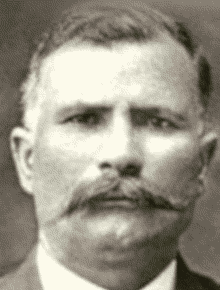
Bonventre
1930 - Vito Bonventre (Born Castellammare del Golfo, Sicily, c1875. Killed Brooklyn, July 15, 1930). As the majority Castellammaresi in Nicola Schiro's organization began to oppose boss of bosses Giuseppe Masseria, Brooklyn boss Nicola Schiro vanished. He crossed the Atlantic and retired to Sicily. (He had made regular visits to his homeland during his reign as boss.) Some believe Masseria exacted a tribute payment from Schiro to end his long neutrality and force the crime family into a pro-Masseria stance. The legend that Masseria had Schiro murdered after extracting the tribute payment is false. Schiro died of natural causes in Camporeale, Sicily, about eight miles from the spot of his birth. Vito Bonventre, a second-cousin of later boss Joseph Bonanno, emerged as the most powerful individual in the crime family. It is uncertain if he was officially designated boss of the organization before he was assassinated by pro-Masseria gunmen. With Schiro gone and Bonventre disposed of, Masseria took the opportunity to insert his own ally, Giuseppe Parrino, into the leadership of the former Schiro organization.
1930 - Joseph Parrino (Born Alcamo, Sicily, 1886. Killed New York City, Jan. 19, 1931). The appointment of Giuseppe Parrino as boss further enraged the Castellammarese mafiosi, who comprised the strength of the crime family. The Castellammaresi regarded Parrino as the worst sort of collaborator, as Masseria was widely suspected of having endorsed the murder of Parrino's brother in Detroit.
Gangster Era Reborn: Joe Parrino murder - crime scene photos
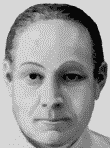
Sketch of Maranzano
1930 - Salvatore Maranzano (Born Castellammare del Golfo, Sicily, July 31, 1886. Killed New York City, Sept. 10, 1931). Parrino was unable to hold the crime family together. As the Castellammaresi and their allies rebelled against Giuseppe Masseria, many in Parrino's organization joined a guerrilla group created by Salvatore Maranzano, considered a heroic figure to the Castellammarese underworld. There is no evidence that Maranzano was ever officially given a rank higher than soldier within the former Schiro clan, but Magaddino (boss of Buffalo at the time) designated him the New York City war leader of the Castellammarese network. The guerrilla group grew to include other Mafiosi who opposed Masseria's tyrannical reign, including D'Aquila loyalists from the Mineo (later Gambino) Crime Family.
Upon the January 19, 1930, murder of Parrino in a Manhattan restaurant, the remainder of the old Schiro clan joined Maranzano's war effort. Following the April 1931 assassination of Masseria, Salvatore Maranzano secured for himself the designation of boss of all bosses in the American Mafia. It remains uncertain if he was formally installed as boss of the former Schiro group. Joseph Bonanno's autobiography stated that Maranzano was family boss at the same time that he was boss of bosses. Nicola Gentile and Joseph Valachi had differing views.
Informer, August 2019, Who Was Salvatore Maranzano?
Maranzano murder - crime scene photograph and autopsy diagram
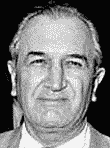
Bonanno
1931 - Joseph Bonanno (Born Castellammare del Golfo, Sicily, Jan. 18, 1905. Died Tucson, AZ, May 11, 2002). With the Castellammarese War just resolved, Salvatore "Charlie Luciano" Lucania and his allies learned that boss of bosses Maranzano was planning a new war to eliminate them. They arranged the assassination of Maranzano at his Park Avenue offices on Sept. 10, 1931. This may have been done with the approval of leading Castellammarese mafiosi like Stefano Magaddino of Buffalo and Joseph Bonanno of Brooklyn. Either during Maranzano's reign as boss of bosses or immediately following Maranzano's murder, Bonanno became boss of the largely Castellammarese crime family based in Williamsburg, Brooklyn. He remained the boss for at least the next three decades. Early in his term, Magaddino may have regarded Bonanno as another puppet ruler. Later, the relationship between the two underworld chiefs fractured.
Law enforcement believed that both Bonanno and Magaddino attended the Apalachin, New York, Mafia conference in November 1957. In his autobiography, Bonanno revealed that the two bosses met together nearby in Endicott, New York, the night before the conference. Bonanno denied that he went to the Apalachin conference.
After a lengthy period of stability, the crime family experienced a period of chaos beginning in the 1960s. Underworld peers discovered that Bonanno and fellow boss Joseph Magliocco were plotting to murder other New York bosses, and Magaddino interference in the Brooklyn crime family triggered a Bonanno factional struggle.
Writers of Wrongs: "Apalachin party-crashers expose Mafia network"
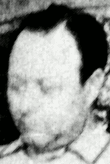
Morale
1964 - John Joseph "Johnny Burns" Morale (Born New York City, Feb. 18, 1912. Died New York City, July 3, 1984). Bonanno traveled to the western United States and to Canada in the early 1960s (some believed he was arranging for the import of narcotics into the United States through Montreal, others suggested he was assembling a source of power and income that was separate from his traditional crime family). Morale was left behind as acting boss. Bonanno returned to New York briefly and then was apparently kidnaped on Oct. 21, 1964. This followed the exposure of a conspiracy by Bonanno and boss Joseph Magliocco to assassinate two other New York bosses. Information received by federal authorities linked the supposed kidnaping to Stefano Magaddino of Buffalo. Later information revealed that Bonanno was freed after a short time but then remained in hiding from the law and adversaries for many months. John Morale was ill-suited to the boss role and gave way to Bonanno's brother-in-law Frank Labruzzo (Born New York City, July 28, 1911. Died Aug. 7, 1966). Labruzzo managed the crime family through the first few months after Bonanno's alleged kidnapping.
By the early 1960s, the Bonanno Crime Family had experienced more than three decades of consistent leadership under Joseph Bonanno. But then it all began falling apart. Possible causes were Bonanno's unquenchable ambition, his intention to pass control of the criminal organization to his son and the meddling of other Mafia bosses in Bonanno Crime Family internal matters.
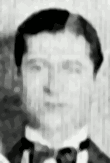
DiGregorio
1965 - Gaspar DiGregorio (Born Castellammare del Golfo, Sicily, 1905. Died Smithtown, NY, June 11, 1970). Buffalo crime boss Stefano Magaddino, a former leader of the Brooklyn Castellammarese Mafia, supported the selection of DiGregorio as boss of the Bonanno Family. DiGregorio was a Magaddino brother-in-law and also had a close relationship with Joseph Bonanno (he was best man at Bonanno's wedding and godfather to Bonanno's son Salvatore). Bonanno's heir apparent, son and consigliere Salvatore "Bill" Bonanno retained the allegiance of a portion of the family, and an internal struggle known as "the Banana War" resulted. DiGregorio was in poor health and appeared to have little interest in battling the Bonannos.
1966 - Joseph Bonanno resurfaced in May 1966 to find his crime family deeply divided and excluded from Commission decision-making. Other bosses reportedly felt Bonanno should pay with his life for his earlier plotting against fellow Commission members. Bonanno, however, went on the offensive and demanded that the Commission oppose outside influences in his organization. It appears that the Commission eventually attempted to appease him. There remained great confusion within the Bonanno Crime Family of this period, and few in the membership knew who the actual leaders were. DiGregorio ultimately stepped aside as leader of the anti-Bonanno faction, but the Bonanno opponents continued.
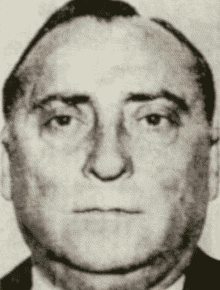
Sciacca
1966 - Paul "Shack" Sciacca (Born June 15, 1909. Died August 1986). With the support of Joseph Colombo and other Commission members, Gaspar DiGregorio lieutenant Sciacca was selected late in 1966 as leader of the anti-Bonanno faction. There were some efforts to resolve the conflict within the family, but the division only worsened. In the spring of 1967, informants told the FBI that Joseph Bonanno was refusing to step aside, and Sciacca was determined to take over as family boss. In the late summer, members of the Mafia Commission were said to be seriously considering dissolving the Bonanno Crime Family entirely and absorbing its members in good standing into other organizations. In the autumn of 1967, the FBI heard that the Commission gave formal support to Sciacca and left Joseph Bonanno and his son Salvatore the option of remaining with the organization as soldiers. The Bonannos responded violently.
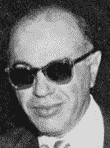
Evola
1968 - Natale Evola (Born New York, Feb. 22, 1907. Died Brooklyn, Aug. 28, 1973). Joseph Bonanno retired from leadership of the Brooklyn organization reportedly after a heart attack. Some suggest that Bonanno established a new Mafia organization in Arizona and expected to control much of California's underworld from there. The Brooklyn-based family was managed by changing panels of top crime figures. Natale Evola and Philip Rastelli appear to have been the most influential leaders of the period. Evola, a native New Yorker born to a Castellammarese family, eventually took over as boss. It appears that Evola did not have the time (or perhaps the ability) to bring the entire organization under his control. Instability continued within the Bonanno clan for years.
1973 - Philip Louis "Rusty" Rastelli (Born Brooklyn, Jan. 31, 1918. Died Queens, June 24, 1991). Upon Evola's death from cancer in 1973, Philip "Rusty" Rastelli took control of the Bonanno crime family. His term as crime family boss lasted only a year, but Rastelli would be back at the helm of the Bonanno Crime Family before the end of the decade. And his return would trigger a series of gangland hits against top men in the organization.
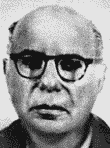
Galante
1974 - Carmine "Lilo" Galante (Born Feb. 21, 1910. Killed Brooklyn, July 12, 1979). Carmine Galante's release from prison allowed him to wrest control of the family from Rastelli. (Some sources indicate that Galante never reached the rank of boss and led only a rebellious wing of Rastelli's family.) As one of the more ambitious and brutal Mafia heads in the United States, Galante immediately became a powerful underworld force and jeopardized the authority of the Commission. Galante reportedly gained wealth through narcotics trafficking - a racket in which he was actively engaged for many years (despite Bonanno's insistence that his organization did not involve itself in narcotics) - and had a base of support that extended into Canada and included immigrant gunmen from Sicily.
Writers of Wrongs: "Bonanno boss shot down in Bushwick eatery"
Writers of Wrongs: "He did it, but they couldn't prove it" (Murder of Carlo Tresca)
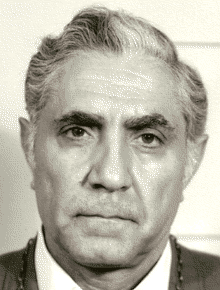
Rastelli
1979 - Philip Rastelli. The Rastelli wing of the crime family asserted itself beginning in the late 1970s. Carmine Galante was murdered after a meal at Joe and Mary's Restaurant, 205 Knickerbocker Avenue in Brooklyn, on July 12, 1979. Rastelli, in prison at the time of Galante's murder, regained his status as undisputed boss following a brief power struggle that ended with the murders of three rebellious group leaders. On May 5, 1981, Alphonse "Sonny Red" Indelicato and his allies Philip "Lucky" Giaccone and Dominic "Big Trin" Trinchera were shot to death as they arrived for a meeting. They reportedly were executed on orders passed from Rastelli to loyal lieutenants Dominick "Sonny Black" Napolitano and Joseph Massino. Much of Rastelli's crime family administration was exposed during the FBI's "Donnie Brasco" undercover operation, in which Special Agent Joseph Pistone penetrated the regime led by "Sonny Black." Rastelli had additional problems with the law when he regained his liberty, including being named as one of the original defendants in the Commission Case (he was severed from that Manhattan federal case, while being tried in Brooklyn on another matter), and he was convicted in the late 1980s of racketeering.
Writers of Wrongs: "Eight guilty of serving on Mafia ruling council."
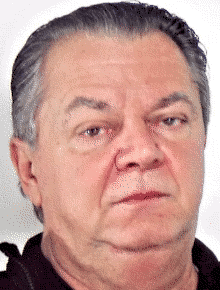
Massino
1991 - Joseph Massino (Born New York City, Jan. 10, 1943.) Rusty Rastelli, seventy-three, was given a humanitarian release from prison in the early summer of 1991. He died several weeks later. Massino was in prison at the time, but he became the next boss of the Bonanno Crime Family upon his release in the fall. Reports indicated that Massino made it a point to rename the criminal organization after himself: The Massino Crime Family. He argued that the name Bonanno had been disgraced by the release of Joseph Bonanno's autobiography, A Man of Honor, in 1983. But Massino turned out to have his own troubles with the underworld code of secrecy. Crime family informants helped FBI build a massive racketeering case against Massino in the early 2000s.
2002 - Vincent "Gorgeous" Basciano (Born ) served as acting boss while Massino wrestled with federal charges. In the summer of 2004, Massino was convicted of eleven RICO violations, including multiple racketeering murders. Before sentencing - and before a separate capital (death penalty) murder case could be brought against him - Massino offered to cooperate with federal investigators. Violating the omertà code to an extent unimagined by Bonanno, Massino provided agents with information on several mob murders and wore an electronic listening device during conversations with acting boss Vincent "Gorgeous" Basciano.
2005 - Michael "Nose" Mancuso (Born c1955) reportedly became acting boss as Basciano was hauled into court. Massino's cooperation led to criminal convictions and life prison sentences against Basciano. As Basciano was convicted, Mancuso was immediately caught up in a federal trial of his own. Mancuso and three other men pleaded guilty to conspiring on gangland murders in 2008. Mancuso was sentenced to fifteen years in prison. He reportedly was released in 2019.
(Profaci)

1905 - Giuseppe Fontana (Born Villabate, Sicily, c.1852. Killed East Harlem, NY, Nov. 4, 1913). Fontana was a leader of the "Zubbio" Mafia network in the Sicilian communities of Villabate and Bagheria in the 1890s. He and his political patron Raffaele Palizzolo were prime suspects in the 1893 Mafia murder of Emanuele Notarbartolo. They were tried and convicted in 1902 but secured new trials on appeal. They were acquitted and released in summer of 1904. The following year, Fontana crossed the Atlantic to settle in New York and become a key contributor to the underworld organization of Giuseppe Morello. There is no evidence that Fontana served as a Mafia boss in the U.S., but it appears likely that he commanded fellow Villabate and Bagheria mafiosi in his adopted homeland. Some Fontana relatives in the Magliocco, Proface (Profaci) and Zarcone families are known to have been involved in underworld activities in New York City and Brooklyn (as well as Chicago and Milwaukee). Following Morello's imprisonment, Fontana threw his weight behind new boss of bosses Salvatore "Toto" D'Aquila around 1912, but Fontana was killed apparently in a factional struggle among former Morello group leaders.
1920 - Salvatore DiBella (Born Palermo, Sicily, Oct. 24, 1878. Died Brooklyn, NY, November 1934.). DiBella commanded a South Brooklyn Mafia unit at the start of the Prohibition Era and possibly earlier. His organization included a number of Mafiosi from the Sicilian communities of Villabate and Bagheria, perhaps remnants of an earlier Fontana organization or faction.
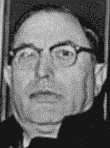
Profaci
1925 - Giuseppe Profaci (Born Villabate, Sicily, Oct. 1, 1897. Died Bay Shore, NY, June 6, 1962). Profaci was descended from Mafia leaders in the Sicilian "Zubbio" organization of Villabate, Bagheria and nearby communities, and he was probably already highly regarded by relatives in the U.S. Mafia upon his 1921 immigration. Profaci initially settled in Chicago, where he managed a grocery. As the influence of Brooklyn-based Mafia boss of bosses Salvatore D'Aquila waned, Profaci began to travel again. He took a trip to Sicily in 1925 and then relocated from Chicago to Brooklyn by the middle of 1927. Salvatore DiBella gave way for Profaci to become a crime family boss. Profaci benefited from the demise of Brooklyn crime lord Frankie Yale in 1928, absorbing some of Yale's rackets and followers from South Brooklyn. Profaci and brother-in-law Joseph Magliocco were among the 21 suspicious persons arrested at a national Mafia convention at Cleveland's Hotel Statler in December, 1928. Profaci maintained an outward neutrality during the Castellammarese War, though he was very close to Joseph Bonanno and secretly supported the Castellammarese effort against boss of bosses Joe Masseria.
Informer, January 2012, "Profaci's Rise"
Writers of Wrongs: "Caught in Cleveland"
Informer, January 2014, "The Regina Pacis crowns"
1958 - Joey Gallo (Born New York, NY, April 6, 1929. Killed New York, NY, April 7, 1972.), his brothers and a number of their associates began to oppose boss Joe Profaci. The Gallo group eventually splintered off from Profaci's family over the boss's perceived abuses of power, and a civil war erupted in the organization. The Gallo grievance reportedly involved unjust Profaci disciplinary "hits," regular fees Profaci assessed against made members of his crime family and Profaci's failure to live up to promises he made to the Gallos. The Gallo revolt won the quiet support of Anthony "Tony Bender" Strollo, a leading figure in the Genovese Crime Family
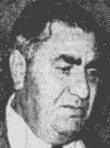
Magliocco
1962 - Joseph Magliocco (Born Villabate, Sicily, c. 1897. Died Dec. 28, 1963). Joe Profaci died of cancer at Southside Hospital on Long Island, June 6, 1962. Following Profaci's stated wishes, his brother-in-law Joe Magliocco succeeded him as boss of the family. Magliocco was not a popular choice, either within the crime family or without. The rebellious Gallo faction strongly disapproved of Magliocco as boss (they reportedly kidnapped and later released him, along with several other Profaci big shots, as their rebellion against Profaci began), seeing in him a continuation of Profaci policies. The Commission withheld its approval - members Carlo Gambino and Gaetano Lucchese took a particularly strong stand against Profaci's handpicked successor. Magliocco was unable to satisfy or eliminate the Gallo faction leaders and failed also to secure the backing of a majority of Commission members. Meanwhile, support for the Gallos increased.
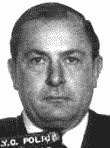
Colombo
1963 - Joseph Colombo (Born June 16, 1923. Died May 22, 1978, as a result of wounds suffered in 1971.) Magliocco and Joseph Bonanno felt that rebellions in their crime families were due to the manipulations of other New York underworld bosses. They plotted to assassinate two Mafia bosses who were members of the Commission, Carlo Gambino and Gaetano Lucchese. (Some suggest they also planned to merge the Bonanno and Profaci organizations into a more powerful group. Such a scheme could only have been beneficial if the Commission was dismantled, as it would have halved the voting power of the allied families.) The plot was exposed by Magliocco lieutenant Joseph Colombo. Bonanno subsequently disappeared and was said to have been kidnaped. Magliocco was called before the Commission and forced to resign as crime family boss. He died of natural causes near the end of 1963. John "Sonny" Franzese looked to be next in line for the boss position, but, with the support of Carlo Gambino, Colombo was installed as boss. It initially appeared that Colombo, who had a good rapport with the Gallos, would be able to reunite the divided organization and satisfy the Gallos that they were being treated fairly. Colombo assigned aging Salvatore Mineo to be his underboss. Carmine Persico, who earlier betrayed the Gallos, was elevated to capodecina.
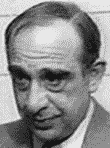
Persico
1971 - Carmine "Snake" Persico (Born Brooklyn, NY, Aug. 8, 1933. Died Durham, NC, March 7, 2019.) A Colombo courtship with the press apparently cost him Carlo Gambino's support just before it cost him his life. Colombo was mortally wounded in 1971, as he prepared to open his well-publicized second annual Italian Unity Day in New York City. Colombo had been organizing an Italian-American Civil Rights League and picketing FBI offices to protest what he claimed was anti-Italian bias behind cosa nostra investigations. As a result of the gunshot wound, he lapsed into a coma. (He died years later, on May 22, 1978.) Joseph Yacovelli is believed to have made an effort to run the organization while Colombo was incapacitated, but Carmine Persico, known as "the Snake" and "Junior," quickly took over leadership of the family.
1972 - The Gallo revolt in the crime family was finally ended on April 7, 1972, as "Crazy Joe" Gallo was shot five times in Little Italy's Umberto's Clam House restaurant. Gallo died on the sidewalk outside the eatery on the day after his forty-third birthday.
1974 - Authorities suspected that Thomas Salvatore DiBella (Born Brooklyn, NY, Nov. 29, 1905. Died Staten Island, June 10, 1988.), son of earlier boss Salvatore DiBella, held a leadership position in the crime family.
1987 - Persico and other New York-area organized crime leaders were sentenced to hundred-year prison terms as a result of convictions in the federal Commission Case. Persico continued to run the Colombo Crime Family from behind bars. Persico loyalists successfully defeated a 1991 rebellion of a faction led by Vittorio Orena. With assistance from his son and acting boss Alphonse T. "Allie Boy" Persico and from John DeRoss, Carmine Persico headed off a rebellion led by his own underboss, William "Wild Bill" Cutolo. Cutolo was called to a meeting in spring 1999, murdered and secretly buried on Long Island.
2009 - Authorities suggested that Persico control over the Colombo Crime Family ended as "Allie Boy" Persico and DeRoss were sentenced to life in prison for ordering the murder of Cutolo. Some expected a resurrection of the Orena faction. Reports in 2010, however, indicated that a Persico loyalist operating in the Boston area, had been functioning as the crime family's street boss since 2009.
Writers of Wrongs: "Crime bosses receive hundred-year sentences"
Writers of Wrongs: "Mafia leader's corpse discovered in Long Island"

1888 - Nicola Taranto (Born Palermo, Sicily, Aug. 22, 1848. Died Brooklyn, Feb. 7, 1911) may have been the first boss of Palermo-born mafiosi in New York City. Taranto reached New York in 1888 and quickly became leader of a Sicilian counterfeiting gang. He was convicted of counterfeiting and sentenced to five years in prison in 1896. The imprisonment appears to have cost him his position in the criminal organization. When freed in 1900, he was observed selling candy. In 1910, he was found to be making money through palmistry.
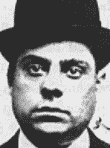
Lupo
c1900 - Ignazio "Wolf" Lupo (Born Palermo, Sicily, March 21, 1877. Died Brooklyn, NY, Jan. 13, 1947) pulled together a Mafia organization of Palermitani in Lower Manhattan and Brooklyn around the turn of the 20th Century. He may have built upon Nicola Taranto's earlier underworld organization. Working as an importer and a grocery wholesaler in the 1900s, Lupo engaged in business bankruptcy, protection and counterfeiting rackets. He quickly became close to Giuseppe Morello, boss of a Mafia of Corleonesi in East Harlem and Lower Manhattan. In 1903, the two men became brothers-in-law with Lupo's marriage to Morello's half-sister, Salvatrice Terranova. The marriage of Lupo's sister made him also an in-law of the Palermo-based Gambino clan. Lupo appears to have been related to the Mangano clan of Palermo through the marriage of his uncle.
Lupo was believed to be responsible for the 1902 Brooklyn "Sack Murder" of "Joe the Grocer" Catania. He was also believed to have played a part in setting up the 1909 assassination in Sicily of visiting New York Police Lieutenant Joe Petrosino. (According to legend, Petrosino had once slapped Lupo around, and Lupo's honor required violent retribution.) A year later, when Lupo was given an extremely long prison sentence for counterfeiting, it was suggested that the sentence had more to do with perceptions of Lupo's involvement in the Petrosino killing than with his proven involvement in the counterfeiting operation.
Writers of Wrongs: "Brooklyn's 1902 'Sack Murder'"
1911 - Salvatore D'Aquila (Born Palermo, Sicily, Nov. 7, 1873. Killed New York City, Oct. 10, 1928) stepped to the leadership of the crime family following Lupo's imprisonment. Known to his underworld associates as "Toto," Palermo-born D'Aquila arrived in New York by 1904. He reportedly rose up through the ranks of the Morello Mafia, though it is likely he belonged to a Palermo-oriented faction in a Morello-led conglomeration of Mafia. D'Aquila had a divided powerbase, with resources concentrated in both the Bronx and southern Brooklyn. He originally based his operations in the Bronx. At the height of his power, he relocated to Brooklyn. While D'Aquila became the most powerful boss in New York City and soon, with the help of allies around the country, secured the designation of boss of bosses, he was unable to pull together the shattered pieces of the Morello organization. He found East Harlem and lower Manhattan to be especially resistant to him, and he resorted to assassination of fellow underworld bosses in an effort to win control of those areas. Fearful of plots against his administration, he is known to have inserted spies into the administrations of various crime families across the country.
1920 - Upon Morello's release from prison, D'Aquila sparked a gangland war in New York by charging Morello and his closest followers with a trumped-up offense and passing a death sentence against them. Years of conflict resulted. Giuseppe Masseria, an unconventional mafioso in lower Manhattan, emerged as D'Aquila's strongest adversary.
1925 - With the war against Masseria virtually lost, D'Aquila abandoned Brooklyn and returned to his Bronx roots. He appears to have retained control over his criminal organization, as well as his boss of bosses title, but he was unable from that point on to project power outside of his own organization.
Gangster Era Reborn: Salvatore D'Aquila murder - crime scene photos
1928 - Manfredi Mineo (Born Palermo, Sicily, Jan. 26, 1880. Killed Bronx, Nov. 5, 1930). Also known as "Alfred" or "Al," Mineo, a produce importer and merchant, was a key early ally of Salvatore D'Aquila and may have led his own Mafia organization within a D'Aquila Mafia conglomeration. The two had a falling out, perhaps over the D'Aquila death sentences against Morello loyalists. Mineo subsequently allied with Giuseppe Masseria during his 1920s war against D'Aquila. After D'Aquila's murder at the corner of Manhattan's Avenue A and 13th Street on Oct. 10, 1928, Masseria became boss of bosses and supported Mineo's claim as new leader of D'Aquila's large underworld organization. While Mineo succeeded D'Aquila as boss, it is likely that he was resented by a continuing D'Aquila loyalist faction. Mineo's chief lieutenant is believed to have been Bronx-based Steve Ferrigno.
1930 - Mineo and Ferrigno sided with Giuseppe Masseria when Castellammarese mafiosi around the country rebelled against the boss of bosses' reign.
Gangster Era Reborn: Manfredi Mineo murder - crime scene photos
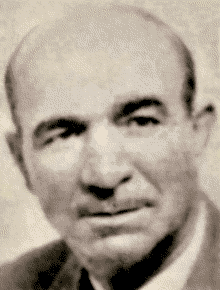
Scalise
1930 - Frank Scalise (Born Corso Olivuzza, Palermo, c. 1893. Killed Bronx, NY, June 17, 1957). Al Mineo and Steve Ferrigno were ambushed and killed Nov. 5, 1930, in the courtyard of a Bronx apartment building (Alhambra Apartments, 750-60 Pelham Parkway). Mineo's opponents took advantage of his death and took the criminal organization away from the Masseria camp of the Castellammarese War. Frank Scalise, leader of a conservative Sicilian faction, seized control of the family. Like Masseria himself, Scalise seems to have been confused by the early moves of the anti-Masseria forces. Eventually, these forces got directly in touch with Scalise and convinced him to ally with them in the Castellammarese War. Scalise managed his sprawling criminal organization from his City Island, Bronx, home.
Writers of Wrongs: Fruits, vegetables may be hazardous to your health" (Scalise murder)
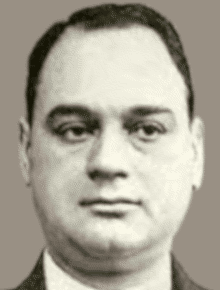
Mangano
1931 - Vincent Mangano (Born Palermo, Sicily, Dec. 1888. Disappeared 1951). After the conclusion of the Castellammarese War to unseat Masseria, victorious boss of bosses Salvatore Maranzano was himself betrayed and murdered under orders of Salvatore "Charlie Luciano" Lucania. The strength of Scalise, a Maranzano supporter, was undermined, and the crime family recognized Vincent Mangano as boss. Vincent and his brother Philip had been powerful Brooklyn waterfront racketeers for some time. They had connections to the Mafia of western New York State and were on good terms with Lucania. Former boss Frank Scalise remained an important part of the crime family in the Bronx, though the focus of leadership shifted to the Brooklyn area.
1951 - The Mangano brothers became a target of Kefauver Senate Committee investigations, when the committee opened hearings in New York City. However, the committee reported that it could not locate either Mangano. Some sources indicate Philip Mangano spoke to federal investigators behind closed doors.
Writers of Wrongs: "Caught in Cleveland"
Writers of Wrongs: "Mafia leader's corpse found at Brooklyn marsh" (Philip Mangano murder)
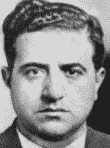
Anastasia
1951 - Albert Anastasia (Born Tropea, Calabria, Italy, Feb. 26, 1902. Killed New York City, Oct. 25, 1957). Philip Mangano was found murdered in 1951, just as his brother Vincent disappeared. Philip's body was discovered April 19 near Jamaica Bay south of Avenue Y in Bergen Beach, Brooklyn. He had been shot three times in the head. Vincent Mangano was never found. Crime family underboss Anastasia, a veteran of Brooklyn underworld violence since the dawn of Prohibition and a top Calabrian racketeer, rose to lead the Mangano family. Early in his administration, his underboss appears to have been Frank Scalise. Eventually, as Scalise fell out of favor, Anastasia called on Carlo Gambino, a leader of the strong Palermo Sicily-oriented Castellano-Gambino faction in the crime family, to serve as underboss. Anastasia was engaged in labor racketeering at the waterfront. According to government investigators he also served as the Mafia's overseer of the activities of a Brooklyn-based execution squad the media dubbed Murder, Inc. During Anastasia's reign, he resided in Fort Lee, New Jersey, near the home of Joe Adonis. (Anastasia's Bluff Road residence, near Arcadian Way, was about a quarter mile from Adonis's home on Dearborn Road.) Anastasia aggressively pursued money-making opportunities. At one point, he was accused of selling numerous Mafia crime family memberships (somewhat reminiscent of a western Pennsylvania extortion racket practiced by Calabrian gangsters). He avoided punishment for this by deflecting blame onto Frank Scalise. This permitted rivals to murder Scalise in June 1957 - about half a year before they moved against Anastasia himself.
"King of the Brooklyn docks: Albert Anastasia"
Writers of Wrongs: "Anastasia delayed, did not escape death in 'chair'"
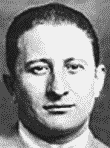
Gambino
1957 - Carlo Gambino (Born Palermo, Aug. 24, 1902. Died Massapequa, NY, Oct. 15, 1976). Anastasia was shot to death by unknown assassins in the barber shop of the Manhattan Park Sheraton Hotel on Oct. 25, 1957. He had been making an effort to involve himself in Cuban gambling operations just before his murder. It is believed that underboss Carlo Gambino conspired with powerful Neapolitan underworld leader Vito Genovese and established Cuban gambling racketeers to eliminate Anastasia. Despite opposition from Anastasia loyalists (and perhaps the remnants of the Scalise faction) within the crime family, Gambino stepped up to the boss role just before the ill-fated Apalachin underworld convention. Gambino faced strong competition inside and outside his crime family. As Gambino put down a rebellion by Armand Rava and former Anastasia supporters, he was supported outside his family by Genovese. Gambino eventually reconciled with the Anastasia wing of the family by elevating Rava's old friend Aniello Dellacroce to the position of underboss. This appeared to secure a future return to power for the non-Sicilian faction. During his reign, Gambino repeatedly interfered in the business of other crime families. By 1975, Gambino was in ill health. Rather than turn to his underboss Dellacroce, Gambino turned day-to-day crime family operations over to his relative Paul Castellano.
Writers of Wrongs: "Apalachin party-crashers expose Mafia network"
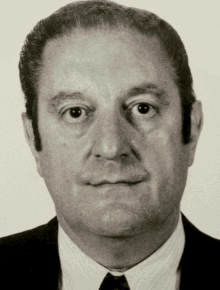
Castellano
1976 - Paul Castellano (Born Brooklyn, NY, June 26, 1915. Killed New York City, NY, Dec. 16, 1985). Gambino died of a heart attack on Oct. 15, 1976, and his brother-in-law "Big Paul" Castellano, owner of a Brooklyn meat distributing business, became the next family boss. The old Anastasia wing of the crime family was offended by Castellano's elevation, favoring Aniello Dellacroce for the top spot. Castellano allowed Dellacroce to remain part of the family leadership, even as he betrayed the trust of Dellacroce's faction by grooming Thomas Bilotti as his successor. During the late 1970s, Castellano was the most powerful of New York's Mafia bosses. In his later years, he was a constant target for law enforcement. Federal agents managed to install electronic surveillance in Castellano's home, obtaining compromising and embarrassing information on the crime boss.
Writers of Wrongs: "Jury selected as Mafia bosses head to trial"
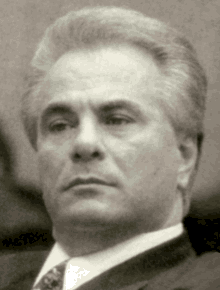
J.Gotti
1986 - John J. Gotti (Born Bronx, NY, Oct. 27, 1940. Died Springfield, MO, June 10, 2002). Despite decades of friction and disappointment, Aniello Dellacroce kept his faction loyal to Castellano. But, immediately following Dellacroce's Dec. 2, 1985, death, John J. Gotti and other Dellacroce backers begin plotting against Castellano. Castellano and Thomas Bilotti were murdered Dec. 16, 1985, outside of Sparks Steak House in Manhattan. Gotti was brought to trial several times on racketeering charges. His early courtroom successes won him the nickname, "the Teflon Don," as the government could not get its charges to stick.
1992 - Gotti's luck changed dramatically in 1992, when turncoat Mafiosi and federal surveillance recordings combined to put him behind bars for the rest of his life. Gotti's son, John A. "Junior" Gotti, served as acting boss until his own imprisonment in 1999.
Writers of Wrongs: "Dellacroce's death fractures Gambino clan"
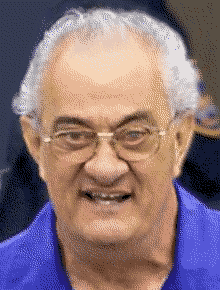
P.Gotti
1999 - Peter Gotti (Born New York City, Nov. 15, 1939. Died Butner, NC, Feb. 25, 2021.), brother of John J. Gotti and uncle of John A. "Junior" Gotti, reportedly became acting boss when "Junior" was sent to prison. Some sources indicate that Peter Gotti was installed as full boss over the Gambino Crime Family about the time of his brother's 2002 death from cancer in a federal prison hospital.
2005 - A series of successful prosecutions left Peter Gotti facing lengthy terms in federal prison. A panel of Gambino Crime Family leaders took over day-to-day management of the organization. Peter Gotti died while incarcerated at the Federal Medical Center at Butner, North Carolina, after serving seventeen years of a twenty-five-year prison term. For years, he had requested early release on the grounds of poor health.
MobNews: "Peter Gotti asks for reduced sentence"
2011 - Domenico Cefalù (Born c1946.) was installed as the sole boss of the Gambino Crime Family. Cefalù was a native of Palermo, Sicily, with underworld connections in his native land and a background in narcotics smuggling. His rise to the boss role represented a return to power of the Sicilian faction of the crime family after an absence dating back to Paul Castellano's 1985 assassination. Under Cefalù's reign, the organization placed greater emphasis on its transatlantic partnership with Gambino and Inzerillo relatives in the Mafia of Palermo, Sicily.
2015 - Francesco Cali (Born New York City, March 16, 1965. Killed Staten Island, NY, March 13, 2019.) served as underboss for Domenico Cefalù and stepped into the boss role when Cefalù retired. With strong business and personal connections to the Inzerillo clan in the Passo di Rigano district of Palermo, Sicily, was able to join Sicilian mafiosi in a transatlantic narcotics smuggling operation. When Cali was shot to death in front of his home on March 13, 2019, many suspected it represented a resurgence of the suppressed non-Sicilian wing of the crime family. However, the killing was later charged to a mentally unbalanced Staten Island resident who had been deluded by QAnon conspiracy theories.
"QAnon follower accused of killing mob boss"

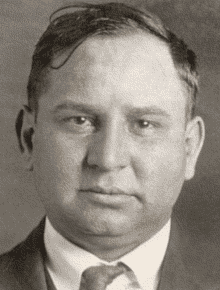
Masseria
1922 - Giuseppe "Joe the Boss" Masseria (Born Menfi, Sicily, Jan. 17, 1886. Killed Brooklyn, April 15, 1931) assembled an unconventional Mafia organization in lower Manhattan during the early years of Prohibition. Masseria combined Neapolitan camorrists from Greenwich Village with Sicilian mafiosi in his crime family. During that period, boss of bosses Salvatore D'Aquila was working to eliminate the remnants of the Morello Crime Family. The Morello-Terranova clan appears to have combined with the Masseria force in opposition to D'Aquila. In a short time, the anti-D'Aquila alliance grew to include elements in Cleveland, Detroit and Chicago. Masseria victories (the murder of D'Aquila's top gunman Umberto Valente, for example) and defections from the D'Aquila camp (top aide Saverio Pollaccia becoming a Masseria adviser) dramatically reduced D'Aquila's power.
1928 - D'Aquila was murdered on a Manhattan street, and Masseria became the next boss of bosses. Among his advisers, "Joe the Boss" counted Giuseppe Morello and Saverio Pollaccia. His organization grew to include Salvatore "Charlie Luciano" Lucania, a Neapolitan mob led by Vito Genovese, a Calabrian organization led by Frankie "Yale" Ioele and the hybrid Chicago organization assembled by Alphonse Capone.
1930 - Groups of mafiosi in New York began to rebel against Masseria's authority. The largest force of rebels was comprised of Castellammaresi commanded by Salvatore Maranzano. The rebellion became known as the Castellammarese War. Masseria likely spent much of the war uncertain who he was fighting against (some time after the first blood was spilled, he actually sat down with Maranzano in an effort to secure a meeting with Buffalo boss Stefano Magaddino). By the time the enemy was known, his strength had been reduced through assassinations and betrayals, and his organization was riddled with spies.
"Masseria's 1913 burglary conviction"
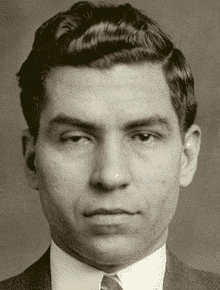
Lucania
1931 - Salvatore "Charlie Luciano" Lucania (Born Lercara Friddi, Sicily, Nov. 24, 1897. Died Naples, Italy, Jan. 26, 1962.) had been an aide to Jack "Legs" Diamond when he began working for "Joe the Boss" Masseria. (Shifting alliances among the big-name non-Italian Prohibition Era gangsters - Diamond, Dutch Schultz, Owen Madden, Vincent Coll - seem to have paralleled relationships among their Mafia affiliates.) The loss of top advisers to Castellammarese War assassinations, left Masseria relying heavily on Lucania. But Lucania, assisted by Capone and other Masseria lieutenants, betrayed the boss and had him murdered at Gerardo Scarpato's Nuova Villa Tamaro restaurant at Coney Island on April 15, 1931. The killing brought an end to the 1930-1931 Castellammarese War. Lucania took over the Masseria organization. Vito Genovese, a Neapolitan crime leader with strong support in lower Manhattan, Brooklyn and New Jersey, became his second-in-command. Lucania and allies found themselves targeted by new boss of bosses Salvatore Maranzano. They had Maranzano assassinated in his Manhattan offices in September of 1931. At a subsequent underworld convention in Chicago, Luciano and his allies created a representative "Commission" to replace the old boss of bosses for resolving inter-family disputes. The first Commission members were the five bosses of New York City, the boss of Chicago and the boss of Cleveland (Cleveland's boss was quickly pushed off the Commission, and Buffalo's boss was added).
1936 - Lucania was convicted of participating in a prostitution racket in New York. Though sentenced to a long prison term at remote Clinton State Prison in Dannemora, he retained his boss position over his crime family.
Writers of Wrongs: "3 things you probably didn't know about Lucky Luciano" by Christian Cipollini
Writers of Wrongs: "Lucky's 1916 narcotics conviction"
"Press coverage links 'Lucky' and 'Joe the Boss' early in 1930"
Writers of Wrongs: "April 19, 1932: Luciano, Lansky nabbed in Chicago"
"Mob boss 'Luciano' in the hands of the law"
1936 - "Chee Gusae" was recalled by turncoat mafioso Joseph Valachi as an early stand-in for the boss while Lucania was in prison. Valachi did not know the spelling of the man's name, only its rough pronunciation. If the individual was Sicilian, a surname starting with a "Goo" sound could have had a "Co" spelling. But neither spelling comes close to any known member of the crime family at this time. Interestingly, Nicola Gentile's description of Dominick "Terry Burns" DiDato (Born Baucina, Sicily, c1896. Killed New York City, Aug. 6, 1936.) has some similarities - though neither in spelling nor pronunciation - with the mysterious "Chee Gusae." DiDato appeared in Gentile's narrative just as Lucania was sent off to prison and was said to be a popular leader in the crime family and a contender for the boss position. In 1936, DiDato was murdered by Mangano gunmen as a (coerced) favor for Vito Genovese, who saw DiDato as a serious rival for power.
Organized Crime and Illicit Traffic in Narcotics, 1965 report, Page 14.
Informer, October 2020, "Nicola Gentile: Chronicler of Mafia history"
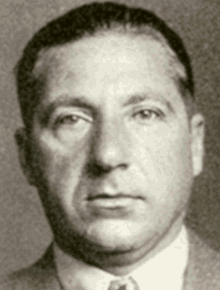
Costello
1937 - Frank Costello (Born Cosenza, Italy, 1891. Died New York City, Feb. 18, 1973) became the long-term substitute for the imprisoned Lucania. Vito Genovese did not have an opportunity to bring the organization under his control after the murder of DiDato. Genovese fled the U.S. for Italy in order to escape prosecution for the Ferdinand Boccia murder of Sept. 19, 1934. Costello, architect of Mafia gambling rackets, assumed control of the day-to-day operations of the crime family by 1937, though imprisoned Lucania retained the boss designation. Costello's leadership on the Mafia Commission and his strong connections to political figures caused him to be known as the "Prime Minister" of the underworld.
1946 - Lucania was released from prison on the condition that he accept deportation to Italy and never reenter the United States. With his permanent absence from the New York underworld a certainty, the crime family reportedly selected Frank Costello to replace Lucania as full boss.
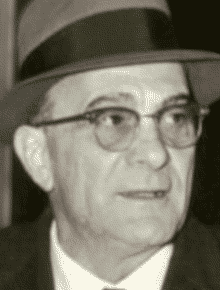
Genovese
1957 - Vito Genovese (Born Risigliano near Naples, Nov. 21, 1897. Died Missouri, Feb. 14, 1969) was discovered in postwar Italy by the U.S. Military. He was returned to the U.S. to be tried for murder. The death of a key witness helped him avoid conviction. He returned to the rackets in New York. In 1957, he moved to acquire the leadership position that would have been his had he not fled the U.S. Genovese ordered a May 2, 1957, assassination attempt on Frank Costello. While the bullet fired at Costello's head merely grazed the boss, it convinced Costello to retire from his leadership position. Genovese had the top spot in the crime family to himself. However, day-to-day management would soon be turned over to others.
1962 - Genovese was jailed on drug charges in 1962 and used a number of acting bosses to run the crime family after that. Genovese underboss Gerardo Catena (1902-1905 to 2000) appeared to head a leadership panel from 1962 until Genovese's death in 1969. The group included Thomas Eboli and Genovese's consiglieri Mike Miranda. Some sources state that Eboli served as acting boss, while Catena retained his underboss role.
1963 - Genovese mistrust of Joseph Valachi reportedly led to the incident that caused Valachi to become a federal informant. The fact that Genovese was boss of the crime family at the moment Valachi told his story caused the organization to become forever known as the Genovese Crime Family.
Writers of Wrongs: "Peers salute Genovese after murder acquittal"
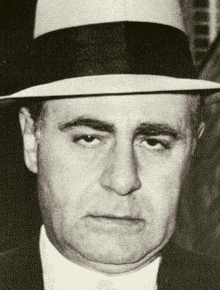
Eboli
1969 - Thomas "Tommy Ryan" Eboli (Born Scisciano, Naples, Italy, June 13, 1911. Killed Brooklyn, July 16, 1972), a New Jersey resident and the capodecina of a crime family faction based in Manhattan's Greenwich Village, had served as part of the leadership panel during Vito Genovese's time in prison. Eboli entered the U.S. in 1912. He was a longtime close ally of rising Genovese mafioso Vincent Gigante. (When Gigante was a boxer, Eboli served as his manager.) Eboli gained in stature following the disappearance of Anthony "Tony Bender" Strollo in April 1962. Strollo's rackets reportedly were given to Eboli's brother Pasquale (known as "Patsy Ryan). Years later, the FBI was told that Tommy Eboli and Gerardo Catena ordered Strollo's murder after obtaining Genovese approval. The ruling panel was disbanded as Genovese died in prison, and Eboli became sole boss of the organization. As crime family boss, Eboli had an antagonistic relationship with Carlo Gambino.
1972 - Eboli was shot to death near his girlfriend's Crown Heights, Brooklyn, home at about 1 o'clock in the morning of July 16, 1972. The murder was likely instigated by Eboli rivals outside of the crime family.
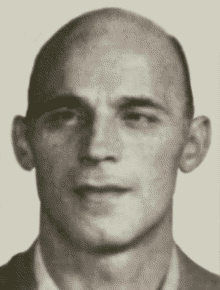
Lombardo
1972 - Phil Lombardo (Born Oct. 6, 1908. Died April 29, 1987). The meddlesome Carlo Gambino reportedly hoped to see Frank "Funzi" Tieri (Born Feb. 22, 1904. Died Brooklyn, March 31, 1981) succeed Eboli as the next Genovese boss and used his influence toward that goal. The Genovese Crime Family allowed him to believe he succeeded but quietly sided with Englewood, New Jersey, resident Phil Lombardo. Known as "Benny Squint" and "Cockeye Phil" - nicknames that sprang from a noticeable misalignment of his eyes - Lombardo screened his underworld activities, using Tieri and Anthony "Fat Tony" Salerno (Born, Aug. 15, 1911. Died Rhinebeck, NY, July 27, 1992) as "front men."
1981 - Lombardo was so effective at concealing his operations behind front men that most law enforcement sources did not suspect he was boss until nearly a decade into his reign. Following Tieri's spring 1981 death, some sources indicated that Lombardo was just then ascending to the leadership post. Others suggested that he had been managing things for a while during a Tieri illness. Perhaps because of the new attention of press and law enforcement (Lombardo's son also had drawn some attention to himself during the year), the seventy-three-year-old Lombardo made plans to retire from crime family leadership.
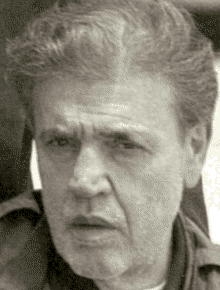
Gigante
1981 - Vincent Gigante (Born New York City, March 29, 1928. Died Springfield, MO, Dec. 19, 2005) secretly took the reins of the Genovese organization, as Lombardo retired to Florida. Known as "the Chin" - the nickname reportedly sprang from the middle syllable of the name "Vincenzo" - Gigante was the son of Neapolitan immigrants. He had already accumulated decades of experience in the Mafia and had worked with leaders from Vito Genovese on. It is widely accepted that he served as the Genovese gunman responsible for the botched hit on Costello in 1957. Like Lombardo, Gigante used Anthony "Fat Tony" Salerno as a front man. Gigante also screened his underworld activities by posing in public as mentally ill.
1986 - Federal authorities won a conviction against Salerno as boss of the Genovese Crime Family in the Commission Case of 1986. Early the following year, Gigante's effective front man was sentenced to a hundred-year prison term. Without his longtime screen, Gigante became the focus of law enforcement attention.
1988 - Gigante had heart surgery in the summer of 1988 and turned day-to-day crime family operations over to his lifelong friend and underboss Venero "Benny Eggs" Mangano (Born New York City, September 1921. Died New York City, Aug. 18, 2017.). Some sharing of leadership responsibilities was likely during Gigante's recovery.
1990 - Gigante was one of the top underworld figures indicted in the Window Case (leaders in the Lucchese, Gambino and Colombo families were also indicted - the Lucchese bosses went into hiding before they could be arrested). Gigante managed to be removed from the case when he convinced doctors at a Westchester hospital that he was not mentally fit to stand trial.
1997 - Sixty-nine-year-old Gigante was brought to trial in the summer of 1997. His mental illness performances were exposed as frauds by a former crime family associate. Gigante was convicted of racketeering and conspiracy. He was sentenced to twelve years in federal prison. Three more years were added to his sentence following a guilty plea to charges that he obstructed justice by feigning insanity.
"Death of 'Benny Eggs' severs link to Genovese Family's foundation"
Writers of Wrongs: "'Chin' Gigante dies in prison hospital"
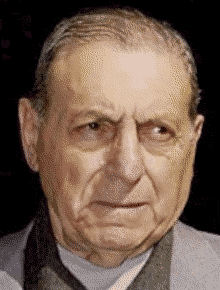
Cirillo
1997 - Dominick "Quiet Dom" Cirillo (Born East Harlem, NY, July 4, 1929.) of the Bronx reportedly took over crime family operations as acting boss while Gigante was in prison. There was some suggestion that Cirillo accepted the position from Gigante only with great reluctance, understanding that he would be targeted by federal agents. (Some in law enforcement believed that Matthew "Matty the Horse" Ianniello was serving as acting boss during this period.) Cirillo had managed to avoid attention through most of his life. His one significant brush with the law occurred in 1953, when he pleaded guilty to running a heroin-trafficking ring in East Harlem. He served about four years in prison for that offense. Agents were alerted to his importance in the 1980s, when he was seen making regular visits with Gigante. Some sources state that Cirillo's term as acting boss lasted only until 1998, but others believe it continued years longer. In 2004, Cirillo's son disappeared and was presumed murdered. The disappearance occurred after the son insulted Bonanno Crime Family acting boss Vincent Basciano. Evidence later obtained through recorded conversations between Basciano and Joseph Massino suggested that Cirillo ordered the killing of his son. Cirillo was convicted of racketeering charges in autumn 2005 and sentenced to four years in prison.
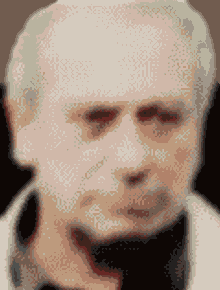
Leo
2006 - Daniel "The Lion" Leo (Born c1940.) of Rockleigh, New Jersey, reportedly became Genovese boss following the late-2005 death of Gigante at a federal prison medical center in Springfield, Missouri, and the imprisonment of Cirillo. Authorities said Leo was engaged with the Purple Gang of East Harlem during the 1970s. He was arrested for criminal contempt in 1980 after refusing to cooperate with a grand jury investigation into illegal activity in East Harlem and the Bronx. The first law enforcement speculation that he had risen to the role of boss occurred late in 2006. In 2007, Leo was imprisoned following a guilty plea to extortion charges. Additional convictions for racketeering offenses followed in 2008 and 2010.
MobNews: "Feds bust alleged Genovese boss"

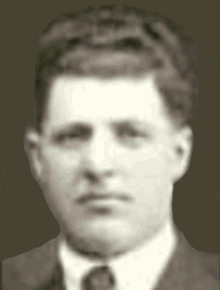
Reina
(Edwin Vargas photo)
1910s - Gaetano Reina (Born Corleone, Sicily, 1889-90. Killed Bronx, Feb. 26, 1930) was a member of the Corleone-based administration of Giuseppe Morello's crime family before 1910. Sometime before 1920, Reina launched his own Mafia organization based in the Bronx. During this time, A Bronx- and Brooklyn-based organization controlled by boss of bosses Salvatore D'Aquila was attempting to dominate and absorb the several other organizations known to exist. The former Morello-Terranova organization in East Harlem was especially hostile toward D'Aquila. Reina may have removed his Bronx crew from both of those crime families in order to avoid involvement in the conflict. However, the formation of the Reina Crime Family (or perhaps its continuation after the 1928 murder of D'Aquila) appears to have resulted in a serious quarrel with the Terranovas in East Harlem, and conflicting alliances with rival non-Mafia gangsters in New York may have contributed to the trouble. Before the Castellammarese War broke out in 1930, the Reina and Terranova organizations were openly hostile toward each other. This hostility and the increasing tension between non-Mafia gangs appears to have resulted in Reina's murder.
1930 - Reina was shot to death outside his girlfriend's apartment building, 1511-1521 Sheridan Avenue in the Bronx. Boss of bosses Giuseppe Masseria, whose Manhattan organization had absorbed the remnants of the Morello-Terranova group, was deemed responsible for ordering the Reina murder. The Dutch Schultz gang, closely allied with Ciro Terranova, may have played a part in the hit on Reina, as the recently constructed complex at 1511-1521 Sheridan Avenue was also the home of Schultz lieutenant Bo Weinberg.
According to often-repeated legend, Masseria ordered Reina's February 1930 murder because he learned that Reina was siding with anti-Masseria rebels commanded by Salvatore Maranzano. This legend could not possibly be true, as there was no rebellion against Masseria at the time of Reina's murder. Even for some time after the rebellion broke out, Reina loyalists worked against Masseria unaware that Maranzano and his Castellammarese forces were doing so as well.
One legend seems more likely. It indicates that Masseria was extracting tribute payments from Reina. This rings true, as it is known that Maranzano made tribute demands when he became boss of bosses. With both Masseria and Reina known to have financial interests in ice companies, it is possible that the legend of tribute payments arose from a form of underworld licensing agreement imposed on Reina by Masseria. If Masseria felt he was being shortchanged, it would have provided a justification for eliminating Reina.
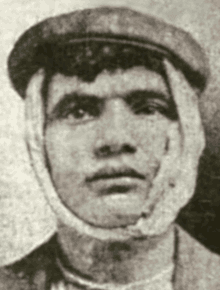
Pinzolo
1930 - Bonaventura "Joe" Pinzolo (Born c.1887. Killed Sept. 9, 1930) became boss of the Bronx organization following the murder of Reina. Years earlier, Pinzolo was arrested in Manhattan as part of a Black Hand bombing ring. His selection as boss was imposed on the Bronx crime family by boss of bosses Giuseppe Masseria, who felt he could count on Pinzolo to be a strong ally. However, group leaders Tommaso Gagliano and Gaetano Lucchese were enraged by the Reina murder and Masseria's appointment of Pinzolo. While remaining outwardly cooperative, they secretly plotted against Pinzolo and Masseria. Pinzolo was shot to death at a "wine brick" office he shared with Lucchese at 1457 Broadway. Police found his body in Suite 1007, the headquarters of California Dry Fruit Importers, with bullets in its left chest and neck.
Gangster Era Reborn: Joseph Pinzolo murder - crime scene photos
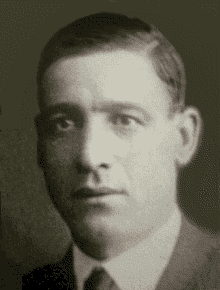
Gagliano
1930 - Tommaso Gagliano (Born Corleone, Sicily, May, 1883/1884. Died New York City, Feb. 16, 1951) was a building contractor who was associated for a time with the Morello organization before moving on to Reina's organization. Gagliano became the leader of the secret anti-Masseria insurrection following the murder of Reina. Gagliano and Gaetano Lucchese cooperated on the elimination of Masseria puppet Pinzolo from their organization. Gagliano took control of the family and used its resources to oppose Masseria.
1931 - Following the conclusion of the Castellammarese War and the demise of Masseria, Gagliano was selected as boss of the former Reina organization. When the boss of bosses position was eliminated, following the assassination of Salvatore Maranzano, Gagliano was selected as one of seven bosses to serve on the new dispute-resolving Commission.
1932 - Gagliano was among five men indicted in 1932 for running a massive building industry extortion racket in the Bronx. Gagliano was charged with tax fraud.
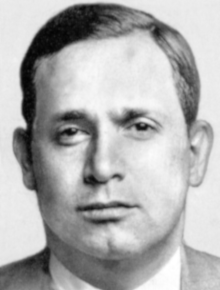
Lucchese
1951 - Tommy Lucchese (Born Palermo, Sicily, Dec. 1, 1899. Died Lido Beach, NY, July 13, 1967) was Tommaso Gagliano's second-in-command for two decades. When Gagliano died of natural causes in 1951, Lucchese stepped up to the leadership of the crime family. The loss of a digit from his right hand resulted in a painful nickname, "Three-finger Brown." Lucchese preferred the alias "Tommy Brown."
1966 - The Mafia commission reportedly began dividing up Tommy Lucchese's personal rackets after he had been hospitalized for a year following surgery for a brain tumor and treatment for a heart condition.
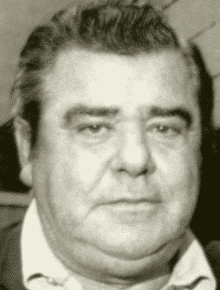
Tramunti
1967 - Carmine "Mr. Gribbs" Tramunti (Born Oct. 1, 1910. Died Flushing, NY, Oct. 15, 1978). Tommy Lucchese died at his Lido beach, Long Island, home on July 13, 1967, after a series of illnesses and operations. The selected replacement boss was Antonio Corallo, but Corallo was serving a prison sentence at the time. Carmine Tramunti took over operation of the Lucchese crime family, with the support of Gambino Crime Family boss Carlo Gambino and the Commission. While Gambino is known for meddling in the internal affairs of other organizations to further his personal interests, it is possible that his role in Tramunti's selection was less sinister. Carlo Gambino and Tommy Lucchese had a close relationship, and became in-laws when Gambino's son and Lucchese's daughter were married. Their criminal organizations, which shared much history, became as close as the bosses themselves. It would have been in Gambino's best interest to ensure that the Lucchese Crime Family was capably led.
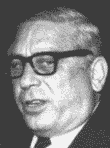
Corallo
1970 - Antonio "Tony Ducks" Corallo (Born East Harlem, NY, Feb. 12, 1913. Died Springfield, MO, Aug. 23, 2000). Aging Carmine Tramunti apparently continued to serve for a few years as a front for new boss Corallo. The actual date of "Tony Ducks" Corallo's takeover is in doubt. Corallo was a specialist in construction and trucking rackets, likely due in part to his close working relationship with Teamsters racketeer Johnny "Dio" Dioguardi. While Corallo successfully avoided (or "ducked") criminal convictions for much of his career, he served a two-year prison sentence in the early 1960s and a three-year sentence later in the decade for bribery. The second of these prison terms coincided with the death of Lucchese and caused the boss role to be assigned to Carmine Tramunti rather than Corallo. Corallo was released from prison in 1970. Sources disagree on whether he immediately replaced Tramunti as boss or was selected after Tramunti began a lengthy prison term in 1973.
1985 - Corallo was among the Mafia leaders indicted in the Commission Case. While the case was under way, he reportedly designated Anthony Luongo as a temporary acting boss. Corallo was convicted late in 1986. In January 1987, he was sentenced to one hundred years in federal prison. It appears that Corallo before beginning his prison term designated Vittorio Amuso as his permanent replacement.
1986 - Anthony "Buddy" Luongo (Born New York City, NY, Oct. 19, 1939. Disappeared November 1986). With Corallo and his underboss facing lifelong prison terms in the Commission Case, Corallo designated Luongo as his acting boss. Luongo did not last long in the position. He disappeared soon after taking office and was presumed murdered. Various rationales have been given for Luongo's removal, including: He sought to take over completely from Corallo and earned the boss's wrath; Vittorio Amuso had ambitions for the top spot and viewed Luongo as his only obstacle.

Amuso
1986 - Vittorio Amuso (Born Brooklyn, Nov. 4, 1934.) reportedly began his underworld career by bouncing between the Lucchese and Colombo organizations. He is believed to have served as a driver for Lucchese big shot Carmine Tramunti for a time before becoming a member of the rebellious Gallo crew of the Profaci (Colombo) Crime Family. When things went badly for the Gallo group, Amuso transferred into the Lucchese Crime Family and became part of a crew led by "Christie Tick" Furnari. Amuso became a close ally of Anthony "Gaspipe" Casso. When Furnari was promoted to crime family consigliere, Amuso moved into his capodecina role. A short time after Luongo's disappearance, Amuso was named the new acting boss.
1987 - As Corallo was sentenced to a life prison term, it was decided that Amuso would serve as full boss of the crime family, rather than acting boss. Amuso's reign was a violent one. He ordered the deaths of suspected rivals and suspected informants.
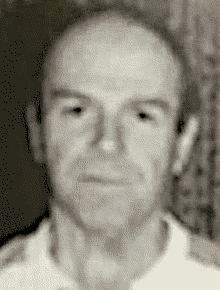
D'Arco
1990 - Alphonse "Little Al" D'Arco (Born New York City, July 28, 1932.) was selected by Amuso to be his acting boss as he went into hiding to avoid federal racketeering charges. But Amuso soon undercut D'Arco by appointing a panel to rule the crime family in his absence. That humiliation reportedly was followed by a failed attempt to assassinate D'Arco, which caused D'Arco to cooperate with federal investigators.
1991 - Federal agents captured Amuso in Scranton, Pennsylvania. He was indicted for racketeering offenses, tax fraud conspiracy and multiple murders, attempted murders and murder conspiracies. He was convicted the following year and sentenced to life in prison. He reportedly continued to command the Lucchese organization from behind bars.